Review for The Day The Earth Caught Fire
Introduction
The Day The Earth Caught Fire has been deleted, which is probably a daft time to review the thing, but it’s was an recent urgent e-mail from Network Distributing that attested to as much, reminding me of the film’s existence, and prompting me to get my order in quick before it vanished off those warehouse shelves. There are still copies to be had, relatively cheaply right now, and it’s well worth picking up while you can. After all, The Day The Earth Caught Fire is one of the best cult sci-fi films ever made, although for a brief time there I certainly didn’t think so. I’m looking at the Fully Restored and Re-mastered Version, which Network released with extra features, although there is a barebones release available as well.
A summer of climatic chaos could be put down to the vagaries of the usual British weather, torrential rain followed by an unending heat-wave, were it not for the fact that it’s the entire world suffering from adverse weather, not just a localised area. Initially, when the US and the USSR announce the biggest nuclear tests yet, taking place at the poles, the readers of the Express newspaper have more interest in the test cricket, but for the science reporter, Bill McGuire, and his colleague Pete Stenning, something doesn’t seem quite right, especially when what looks to be another silly season story turns out to have a whole lot of unreasonable panic and chaos behind it at the Met Office. Stenning’s social charms may be lacking, coming off a divorce, and heading into obscurity in his work, but he somehow manages to connect to a switchboard operator at the Met Office named Jeannie Craig, and when she inadvertently stumbles on the truth, she contacts him. The truth might just be that mankind has gone a step too far in its hubris and doomed the world...
Picture
The image is presented in 2.35:1 monochrome, with a slight window-boxing to counter overscan on CRT televisions. It’s a clean, stable and impressive print, with good contrast and detail levels. The film also replicates the original theatrical release format, which had the opening and closing scenes tinted yellow-orange to reflect the extreme heat in the scenes. Other than the odd scratch line, and the limitations of stock footage, the only issues would be moments of moiré on fine detail, and a smidge of compression. It scales up to a flat panel display pretty well, but this is one cult movie that would really benefit from a Blu-ray release. The effects work from 1961 is really quite effective in telling the film’s story, with some deft matte work, although some of the backdrops are a little ropy.
Sound
The English audio is presented in DD 2.0 mono form, and there are no subtitles for the film. This is a shame as I increasingly find that the further I get away from this era in age, the longer it takes for me to click with the clipped and fast paced dialogue that was de rigueur in 1960s British Cinema, and I always find I miss the first few minutes of dialogue as it takes me a while to re-engage that mindset. The film is practically bereft of scored music, apart from some moments of ominous undertone, as it adopts a mostly documentary style to its storytelling.
Extras
The disc comes in the usual Amaray case, and is coded for Region 0. The inner sleeve of the case has a chapter listing on one face, and the film’s cast on the other. That’s useful as the film itself simply ends by fading to black, no cast.
The disc presents its content with an animated menu that takes a Blu-ray’s age to load, as it revels in its animated glory a little too long.
On the disc you’ll find five text biographies for the cast and director, the theatrical trailer and four US TV Spots, 3 pages of production notes, and a comprehensive stills gallery divided into 5 sections and of which some images push this discs BBFC rating up from the film’s PG to an overall 15.
Of interest will be a Leo McKern Interview which last just over 8 minutes, in which he’s refreshingly honest about the film and his co-stars, given the breathing space of some 40 years.
The director’s commentary is scene specific, and has Val Guest interviewed about the film. It’s nice and informative, and replete with some engaging reminiscences.
Conclusion
I’ve mentioned this before, but I am a child of the latter half of the nuclear age, the half after the promise of cheap electricity, flying cars and robots, the half with the Cold War brinkmanship, the duck and cover adverts, and the fear, nay the expectation that any minute existence would end in a single actinic flash. Stories of nuclear Armageddon really resonated with me when I was growing up, Planet of the Apes gave me nightmares for months, and you can bet that I was awed and terrified in a similar way by The Day The Earth Caught Fire. It was an early, anti-war message coming in 1961, when people were only just beginning to fathom what a daft idea nuclear weapons were, the knife edge of the Cuban Missile Crisis was yet to happen, yet when every week would have the report of a new mushroom cloud rising in the South Pacific as the US tested ever bigger bombs, only to be countered by the Soviet Union.
Ten or fifteen years later, when the lunacy of Mutually Assured Destruction vied with a new round of Cold War posturing during the Reagan Brezhnev era, films like The Day the Earth Caught Fire really had an impact on me. The idea that without even going to war, our warlike tendencies could still doom us, that the endless one-upmanship of nuclear testing could have an irreversible effect on our world gave me chills. Especially given the matter of fact way the story unfolds in the film, the documentary style lacking in histrionics and melodrama, much more effective than a film aimed at the emotions. Then I actually learned about nuclear bombs, how much power they have, and what effect they actually do have on the Earth. The asteroid impact that drove the dinosaurs to extinction was 2 million times more powerful than the largest nuclear bomb ever test detonated, and that impact, while devastating in terms of climate and immediate seismic effects, did comparatively nothing to the planet’s motion in its orbit around the sun.
After I learned that, for a few years in the mid-eighties, I dismissed The Day the Earth Caught Fire as unscientific nonsense. After all, nothing that man could do would have that drastic effect on the climate, right? And then I learned about the Greenhouse Effect, and how humanity’s reliance on fossil fuels and increasing industrial activity was altering the balance of the climate. So in the space of a few years, The Day The Earth Caught Fire went from effective and ominous anti-war polemic to ridiculous far-fetched nonsense, to terrifyingly prescient warning on how man’s irresponsible treatment of the planet would have adverse and irreversible effects on it. That’s pretty impressive for a cult sci-fi film.
What’s most impressive is that it doesn’t play like a sci-fi movie at all. It’s a thriller first and foremost, played in documentary style, and told from the point of view of the Daily Express newsrooms. The idea being that the nuclear testing has an unexpected effect on the climate, and governments being what they are, their first instinct is to cover it all up. It’s down to the journalists at the Express to uncover the truth, to ask the right questions, to dig in the right places. It’s all about detective work, and it’s about talking heads, not massive effect shots. Stock footage is used for certain weather extremes such as blizzards, droughts, and deluges, as well as forest fires and riots, and a few effects shots are used when characters in the film face such events head on, but these moments are just to illustrate the story. The actual weight of the story comes through the dry and methodical journalism, and it’s an approach that has worked again and again in films like All the President’s Men and The Insider.
The emotional connection in the film comes from the characters of Pete and Jeannie, the down and out reporter and the office temp that connect over course of the story. Pete Stenning is a man damaged by a painful divorce that sees him separated from his son, and losing motivation in his work until this story comes up. His first instinct is the mercenary one to use Jeannie to get his story, but thereafter he feels some guilt about it, even though she knows that it is a story that the public need to know. And even as the world spirals to its doom, they find hope and a reason to keep living in each other.
An interesting character in the film is the Express’ editor, Jefferson. It’s not a great performance, until you take a look at the extras and see that the actor was Arthur Christiansen, not an actor at all, but technical advisor on the film, and recently retired editor of The Express in real life. You can hear more about the verisimilitude when it comes to the newsrooms in the commentary. And yes, those are the dulcet tones of Michael Caine in an un-credited role in the film.
The Day The Earth Caught Fire is an interesting example of how a film’s relevance changes over time. For this film it waxed and waned with historical events, and with the increase in scientific knowledge about the world. At this moment, the film is more relevant than ever before and as such it is one of the best sci-fi films to come from British filmmaking. It’s a disc well worth owning, and if you make haste, you can still pick up a copy cheaply enough. Hopefully Network will go back and relicense it for a Blu-ray release, as it could look fantastic.































































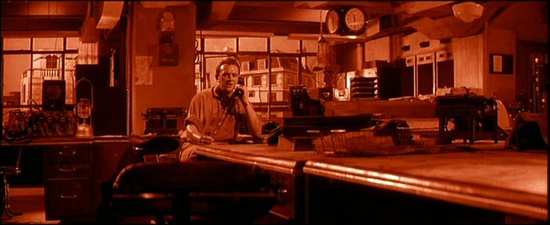
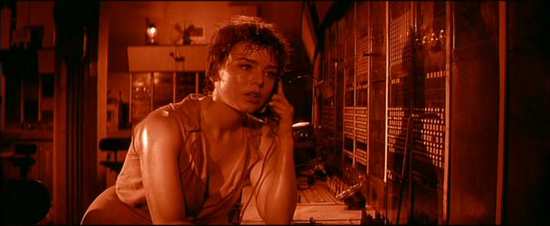
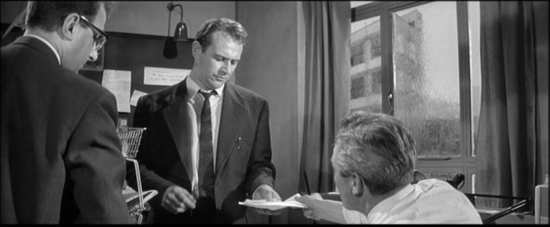

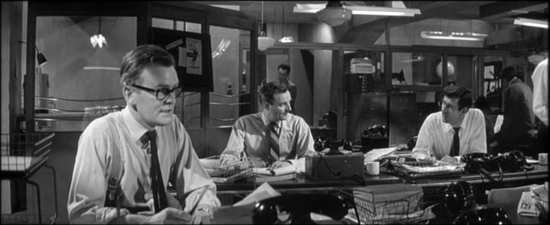
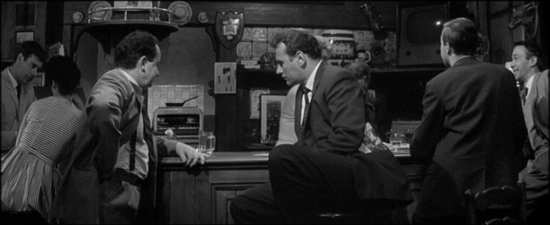
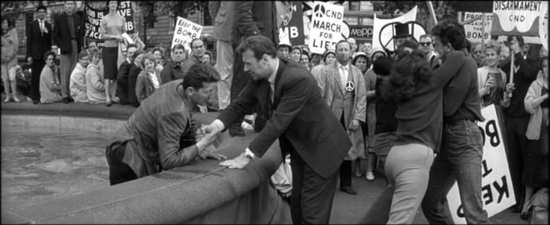
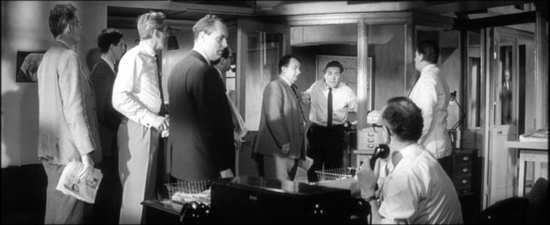
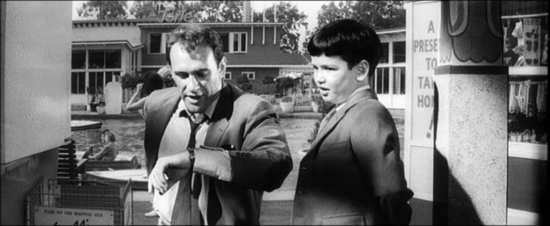
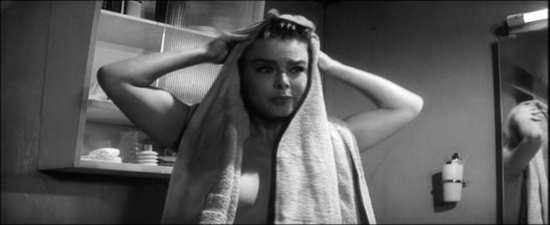
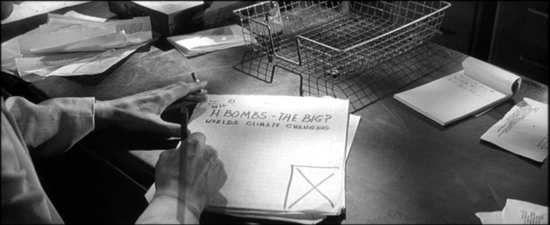
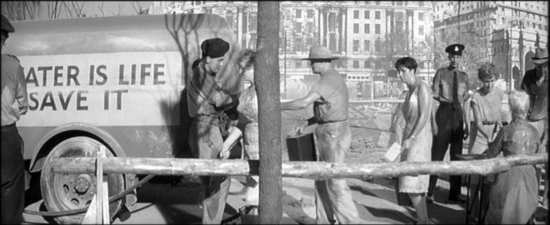
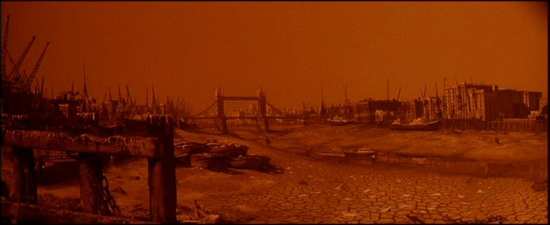
Your Opinions and Comments